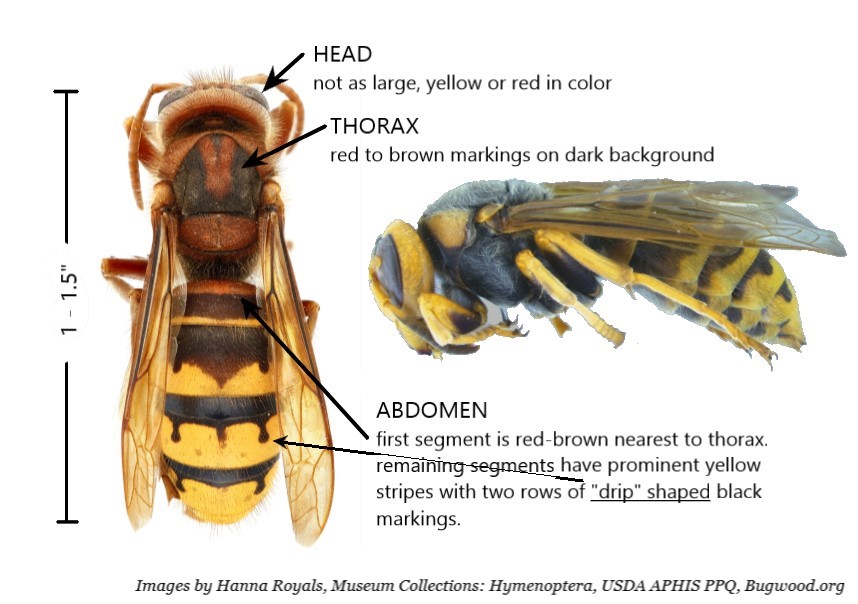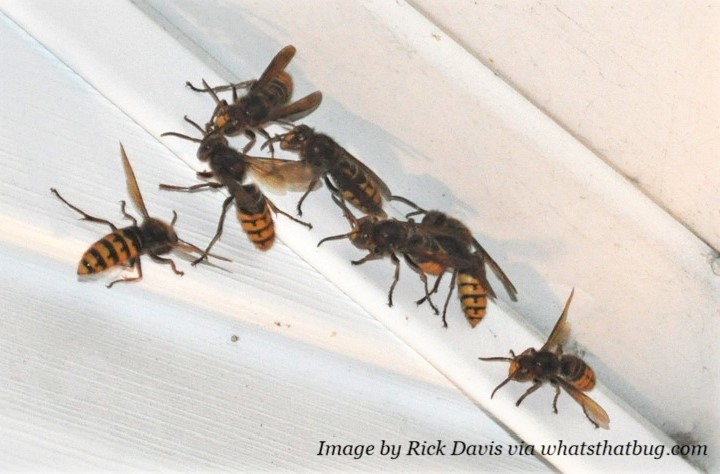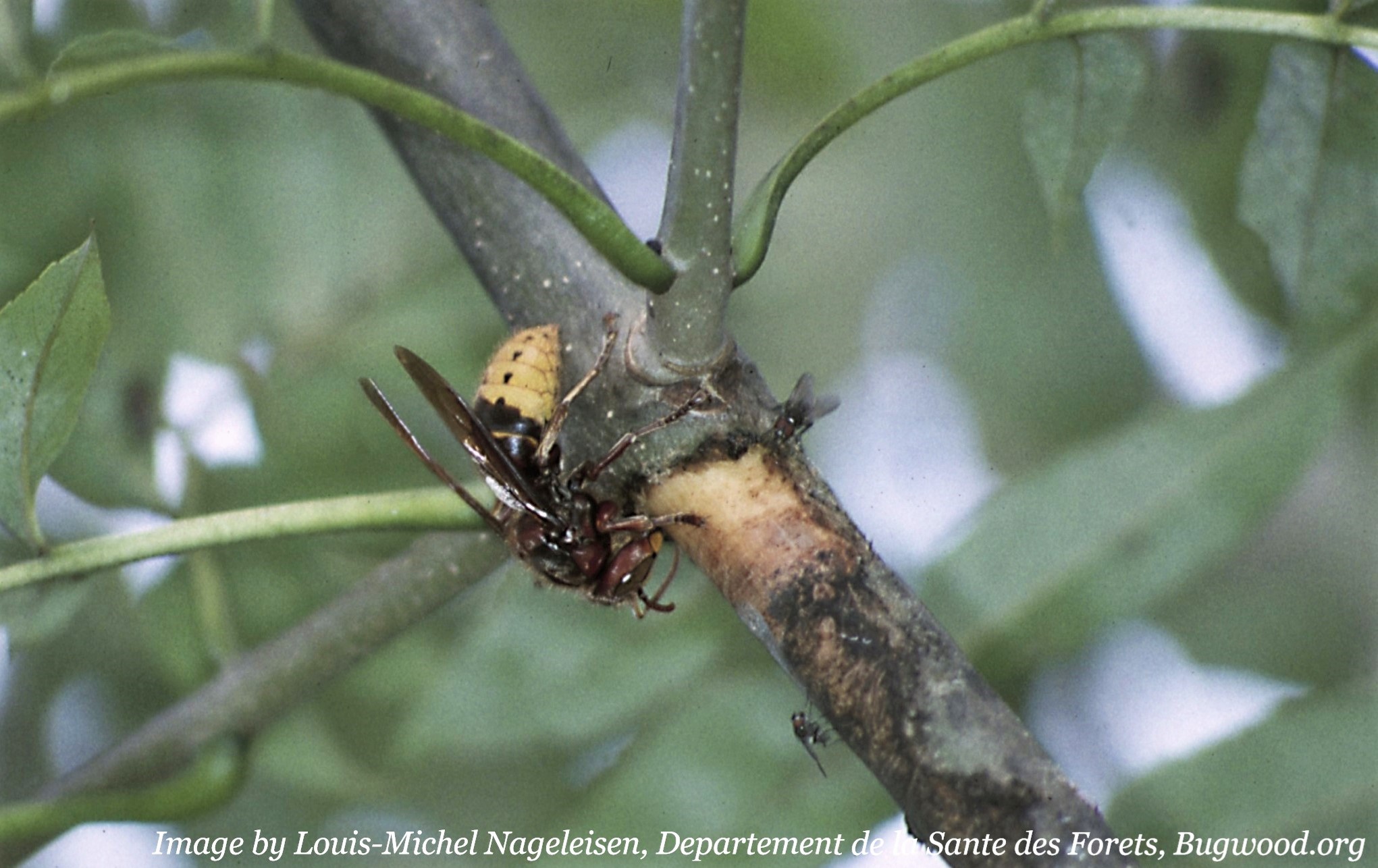DACF Home → Bureaus & Programs → Bureau of Agriculture → Division of Animal and Plant Health → Apiary (Bees) → Exotic Hornets
Exotic Hornets
The Northern giant hornet Vespa mandarinia and the European hornet Vespa crabro
The Northern giant hornet (Vespa mandarinia), formerly known as the Asian giant hornet, (left) has recently been found in the United States (Washington state ONLY), and has garnered much attention due to sensationalist headlines. Dubbed the "murder hornet", the Northern giant hornet is primarily a pest of honeybees. Like other hornets and wasps, it can sting several times and its stings can be painful and potentially lethal to those allergic to its venom. IT IS NOT KNOWN TO OCCUR IN MAINE!
The European hornet (Vespa crabro) has been established in the U.S. since the 1800’s. European hornets are very large wasps that look similar to Asian giant hornets. They typically nest in dark cavities, usually hollow logs deep in the woods. People usually come into contact with this species in the spring when new queens are beginning to make nests or in the fall as workers shift from capturing insects to being a scavenger. We are interested in knowing more about its distribution in Maine.
(click on images to enlarge)
Northern Giant Hornet |
European Hornet |
|
Description
|
Northern giant hornets are 1.5"-2" long. |
European hornets are smaller; 1"-1.5" long. |
Nests |
Northern giant hornets typically build their nests underground, usually in abandoned rodent burrows in forests, often in association with pine roots. Nests are sometimes constructed in dead, hollow trunks or roots of trees, but these are never more than 3 to 6 feet above the ground. Aerial nests are rare. Nests can be more than 2 feet wide and contain hundreds of adult hornets. |
European hornet nests are typically located in a cavity, such as a hollow tree or wall void. They rarely appear freely suspended like the football-shaped bald-faced hornet nests. The entrance to European hornets' nests are frequently 6 feet or more above ground. In some instances, a portion of the gray, papery nest extends outside the cavity or void. |
Other Signs |
The Northern giant hornet kills honey bees. In the spring, when colony numbers are low, NGH feed on individual honey bees. As the season progresses and the NGH colony increases in size, NGH will attack and kill full honey bee colonies. The Northern giant hornet is generally not interested in pets, large animals or humans. However, they may attack if you get too close to the nest. As with other wasps, multiple stings from Northern giant hornets can cause anaphylaxis, severe toxicity and death due to large amounts of venom injected during an attack. The Northern giant hornet has not been found in Maine or any other state besides Washington. |
European hornet workers will fly at night and may be attracted to porch lights or light shining through home windows. European hornets also chew the tender bark of twigs and branches. |







